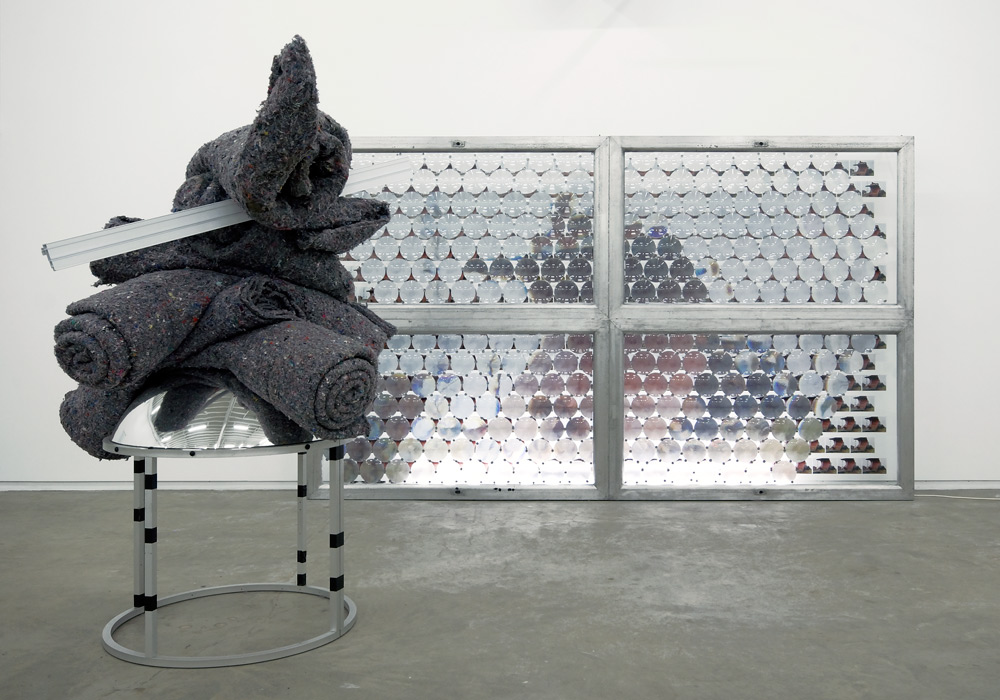1. “The Longest Bridge” at Off Vendome, New York
I liked the subtle ways in which Dustin Hodges’s work resonated with Silke Otto-Knapp’s, which likewise echoed William Gedney’s. Off Vendome’s proprietor, Matt Moravec, has the kind of curatorial sense I wish we saw more of today. Three exhibitions into its first year of programming after opening its new space in New York, Off Vendome’s “The Longest Bridge” was just what you want a summer group show to do.
2. Greer Lankton at Between Bridges, Berlin
Greer Lankton’s puppets are exquisite enough to have an afterlife as objects in a gallery or museum. Her drawings, which document her male-to-female transition, were fascinating and difficult to look at. With so much needed attention on trans issues this year, Lankton’s show was, by far, the most moving and urgent, perhaps because of its unassuming nature. It simply was.
3. “Daniel Spoerri” at Studio for Propositional Cinema, Düsseldorf
The detritus left from birds, pickled film in a jar, documentation of empty whiskey bottles and a little sculpture by Dorothy Iannone—what else could make it more perfect? Oh, right, that it’s exhibited in Daniel Spoerri’s old Düsseldorf studio, and his markings remain on the old wooden door.
4. Marcel Broodthaers’s “Musée d’Art Moderne—Département des Aigles” at the Monnaie de Paris, Paris
Broodthaers had two major retrospectives in Europe this summer. This was the only one I managed to see. Broodthaer’s work needs to be seen en masse, and I cannot think of a better location than the former minting house for Paris.
5. “Dia 15 VI 13 545 West 22 Street Dream House” at Dia:Chelsea, New York
This project of the Dia Art Foundation was a sort of like a redux of La Monte Young’s Dream House in SoHo. The electronic mandalas and the precise drones were welcomingly overwhelming. They brought your body down into the space, proving that transcendence doesn’t always need to be upwardly vertical.
6. Owen Kydd at Monte Clark Gallery, Vancouver
It’s a bold move on Kydd’s part to show large-scale photographs indebted to Jeff Wall. What is most evident in the work, however, is that Kydd continues to grapple with questions of how technology subsequently challenges and opens up new possibilities for pictorial depiction. His decision to print the photographs on adhesives makes that obvious, so that the status of the photographs as a picture begins to blur with their status as architecture.
7. “How Do I Fit This Ghost in My Mouth? An exhibition by Geoffrey Farmer” at the Vancouver Art Gallery, Vancouver
It was nice to see a retrospective of Geoffrey Farmer revisiting all of the works I had seen before (some of which I have reviewed for this magazine), but even more so the ones I had not seen like Let’s Make the Water Turn Black. And now with the recent announcement, I’m looking forward to Farmer’s exhibition at the Venice Biennale in 2017.
8. Alex Morrison’s “Phantoms of a Utopian Will / Like Most Follies, More Than a Joke and More Than a Whim” at the Burnaby Art Gallery and SFU Gallery, Burnaby
This jointly held retrospective of Alex Morrison allows the viewer the time and space to see what the artist has been up to for the past 15 years: a sustained exploration of how architecture informs subculture. Morrison’s work reads like the schematics of a mad architect; and with this retrospective, we have the chance to step into that world. His new digital renderings are fantastic.
9. Gareth Moore’s “A Burning Bag as a Smoke-Grey Lotus” at La Loge, Brussels
These sculptures, which also double as instruments, further Moore’s recent interest in sound, particularly in its healing properties. La Loge is a former masonic hall, and there is something both eerie and calming about walking around Moore’s work, perhaps as one of the performers activates the sculptures, a variety of sounds filling the room.
10. “The Avant-Garde Won’t Give Up: CoBrA and its Legacies” at Blum and Poe, Los Angeles
What this exhibition made clear, more than anything else, is that American painting since the 1980s has been less influenced by Abstract Expressionism and more by post-war European avant-garde painting, such as CoBrA. The eighties weren’t so much a return to big painting as a fusion of the content and execution of European avant-garde painting with the scale of American painting. On top of that, this exhibition was fantastic to look at.
11. Lynette Yiadom-Boakye’s “Verses After Dusk” and Duane Hanson at the Serpentine Galleries, London
If anything announced the artworld’s return to figuration more boldly than these exhibitions, please tell me. Both exhibitions, of figurative painting and figurative sculpture, in the Serpentine Gallery and in its Sackler Gallery, were fantastic. And both Yiadom-Boakye and Hanson’s work deserves even more attention whether or not it fits the zeitgeist.
12. Rochelle Goldberg’s “The Local Link (lust got in the way)” and Vicky Alexander’s “The Temptation of Saint Anthony” at the Apartment, Vancouver
Rest in Peace, the Apartment. I have no doubts that Lee Plested will take his energies elsewhere, doing what he does so well: engaging, energizing and supporting contemporary art. These two corresponding solo shows were a highlight among many excellent exhibitions at the now-defunct gallery. Alexander’s early work is the most compelling and obvious bridge between the Pictures Generation and the so-called Vancouver School. And there is something wild and unexpected about Goldberg’s work; I’m eager to see more.
13. Jerry Pethick’s “Shooting the Sun/Splitting the Pie” at the Vancouver Art Gallery, Vancouver
I hope more attention is soon given to Pethick internationally. It is astounding how contemporary some of this work feels, and how madcap his work is. Let it, too, have an afterlife.
14. Stephen Waddell’s new cave photographs
My favourite studio visit of the year. I cannot wait to see these works exhibited.









